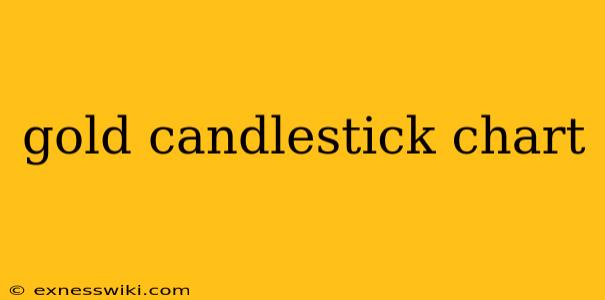Unveiling the Secrets of Gold: A Candlestick Chart Deep Dive
Have you ever wondered how to decipher the mysterious language of gold prices? It's a question many investors grapple with, and understanding candlestick charts can be a powerful tool in navigating the volatile world of precious metals.
My own journey into the world of gold started with a simple curiosity. A friend of mine, a seasoned investor, convinced me to try my hand at trading gold. He showed me a candlestick chart, its green and red candles dancing across the screen, and I was instantly intrigued. I couldn't understand the meaning behind those tiny shapes, but I was determined to learn.
In my opinion, candlestick charts offer a unique perspective on price movements. They provide a visual representation of price action, allowing traders to identify trends, patterns, and potential turning points. Unlike traditional bar charts, candlesticks reveal not only the opening and closing prices but also the highs and lows within a given timeframe.
According to research by the World Gold Council, gold prices have historically been influenced by factors like global economic growth, inflation, and interest rate fluctuations. These economic events can create distinct patterns on a candlestick chart, revealing valuable insights for traders.
Let's delve into the fundamentals of interpreting gold candlestick charts:
Understanding the Elements
- Bullish Candles: Green or white candles indicate an increase in price. A long green candle suggests strong buying pressure, while a short green candle may signal weaker buying.
- Bearish Candles: Red or black candles represent a decrease in price. A long red candle signifies strong selling pressure, while a short red candle implies weaker selling.
- The Wick (Shadow): The thin lines extending above and below the body of the candle represent the highest and lowest prices reached during that period. Long wicks suggest hesitation or indecision in the market.
Common Candlestick Patterns
- Doji: A doji candle appears when the opening and closing prices are nearly identical, forming a cross-shape. This pattern can indicate indecision in the market and a potential turning point.
- Hammer: A hammer candle has a small body and a long lower wick, suggesting buyers stepped in to prevent further price declines. This pattern can be a bullish signal.
- Shooting Star: A shooting star candle is the opposite of a hammer, with a small body and a long upper wick. It suggests sellers were in control and pushed prices down.
Using Gold Candlestick Charts in Your Trading Strategy
- Identify Trends: Observe the overall direction of the candles to determine if gold is trending upwards (bullish), downwards (bearish), or sideways (range-bound).
- Spot Potential Reversals: Look for patterns like Doji, Hammer, or Shooting Star, which can signal potential reversals in the trend.
- Confirm Entry and Exit Points: Combine candlestick patterns with other technical indicators, like moving averages or volume, to confirm your trading decisions.
Remember, reading candlestick charts is a skill that takes time and practice. It's essential to analyze charts in the context of broader market conditions and economic factors influencing gold prices.
Just like my own journey into the world of gold trading, the path to mastering candlestick charts is an ongoing process. By combining the power of visual analysis with a deep understanding of gold market dynamics, you can gain a significant edge in navigating the world of precious metals.
Don't forget to consult reputable sources and experts for further guidance and insight into the world of gold trading. With dedication and practice, you'll be able to interpret the whispers of the gold candlestick charts and unlock the secrets of this valuable commodity.
